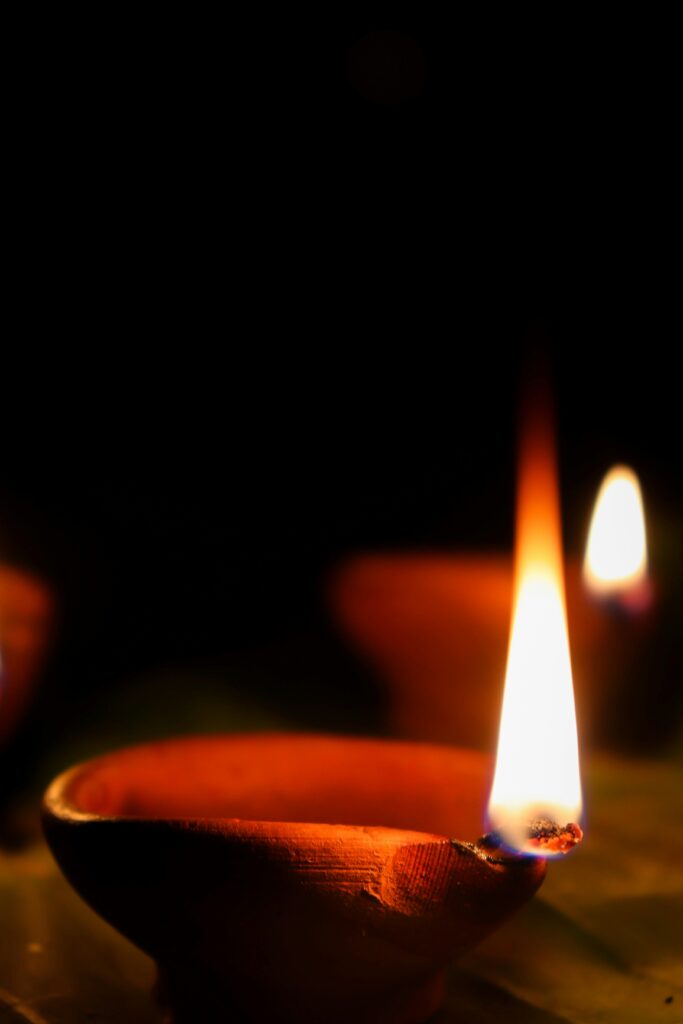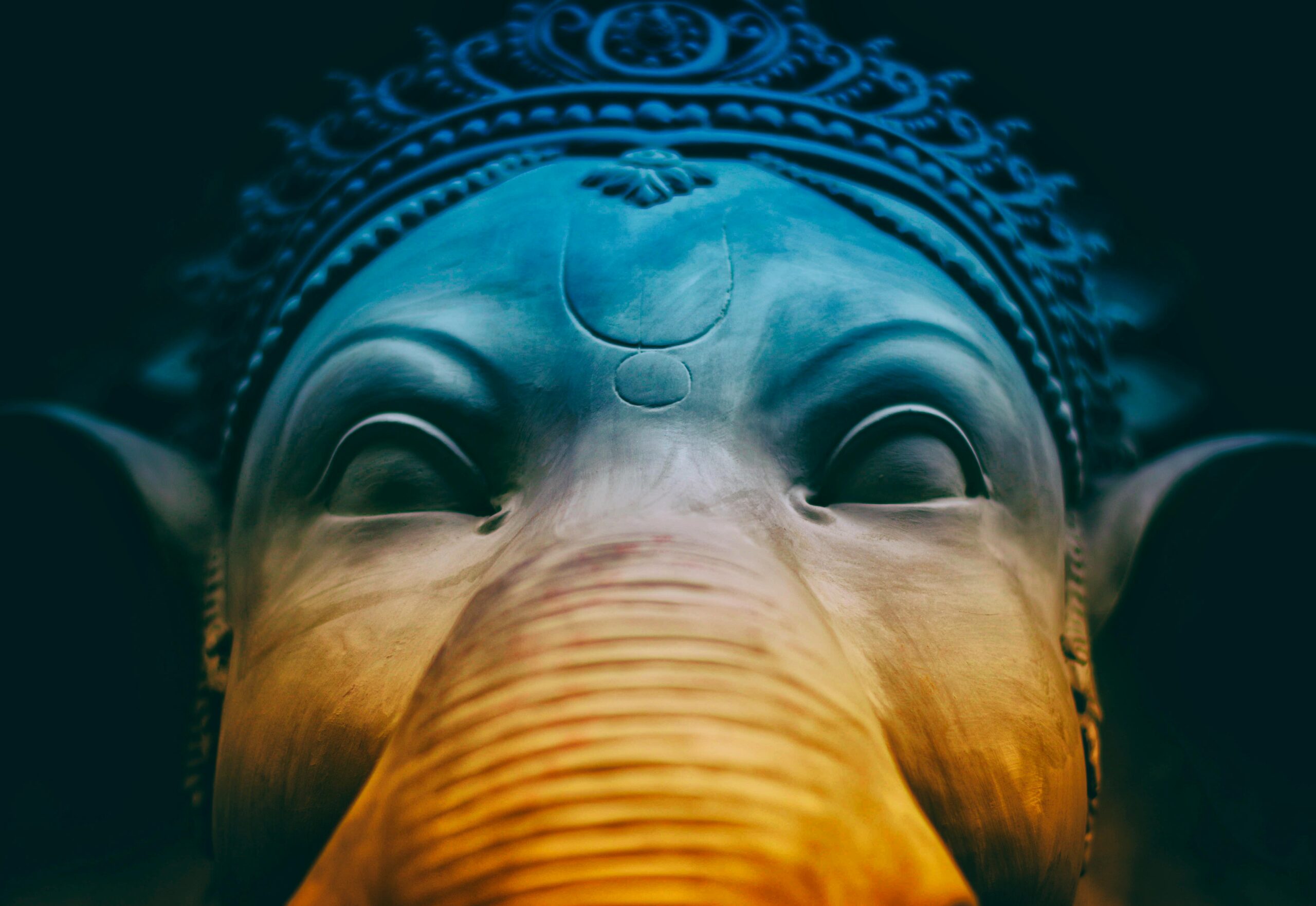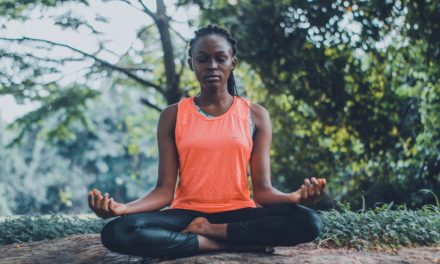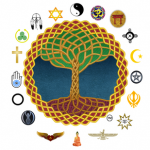It was a freezing Friday night in January, and instead of enjoying a long overdue dinner with my husband, I was sitting in a Hindu temple on the Upper East Side. This was the first time in my life I’d attended a house of worship voluntarily, not for a wedding, funeral, anniversary, bar mitzvah, baptism, or because my parents made me. For once, I was there on my own terms, a seeker in need of comfort and guidance.
Up until this year, I considered myself a dedicated skeptic. I’m not sure I ever believed in religion, even as a child repeating the Sanskrit prayers my parents taught me. The colorful tales of Hindu mythology were alluring, but felt disconnected from my life as a brown girl in a New Jersey suburb. There were aspects of the rituals that I enjoyed – the intricate brass statues of gods and goddesses, and the elaborate lehengas and silk saris we wore to family weddings. I loved the Bharatanatyam dance classes I took on weekends, and the rhythms of vedic chanting. But appreciating the aesthetics of religion didn’t make me a believer.
As I got older, I discovered the presence of the divine in art. When I watched a dance performance or visited a museum, I felt both a sense of awe, and a desire to create. These stirrings of inspiration were the closest I’d ever felt to a higher power. To this day, I think of The Metropolitan Museum of Art as “art church,” a place I go to be reminded that there is beauty in this world. That humans, despite our appetite for destruction and power, are also imbued with the gift of self-expression.

But lately, the occasional trip to The Met wasn’t enough to keep the “scaries” at bay. I felt an increasing sense of desolation – not a transient loneliness that brunch with a friend (likely rescheduled multiple times) would fix. As a working mother of two in my forties, I was constantly drained and spiritually bereft. It was too early in the year to start spiraling, but it seemed I had already begun.
Last year, after much internet research and hand wringing, I tried antidepressants for the first time. As promised, the little white pills eased my symptoms. But they couldn’t address the source of my growing unease. This year, I was moved to try something new. Perhaps a cosmic crisis required a cosmic solution.
Hence my Friday night venture to the Hindu temple, where I sat with a dozen others for a class on the Bhagavad Gita (like Bible study, but different). Taking a class seemed like less of a commitment than attending an actual service, and less out of character for me. After peeling off my winter layers and settling into a back row, I studied the large black and white images that hung at the far end of the narrow space. These were not illustrative images of deities in all their cartoonish glory. They were black and white photographs of Hindu mystics, real people whose legacy continued through the teachings of the temple. There were pictures of two men, and I was glad to see one woman.
The other attendees were spaced out in the room, each person immersed in her own thoughts. The silence was so loud that it began to pulse in my ears. It was a different kind of silence than at home, where nagging thoughts of laundry and aspirational redecorating were impossible to avoid. In the most obvious of realizations, it dawned on me why it made sense to have a destination to commune with God. The spaces of regular life – work, school, home – were too distracting to the spirit.

Recently, I was surprised to learn that a colleague attended church almost every weekend.
“Which one do you dread more, the gym or church?” I teased.
“Church,” she admitted with a laugh. “But I always feel better after I’ve gone.”
The whole day at work, I’d gone back and forth about going to the temple that evening, talking myself in and out of it. Even though nothing had happened yet, I was grateful to be there, to have made the effort at all. As much as I loved my family, I was glad to be alone, not having to fish snacks out of a tote bag for my son, or blow my daughter’s runny nose. I didn’t have to care for anyone but myself. Quietude was a novelty all of its own.
Silence, I had come to understand, had many textures. There was the silence of being ignored, or shutting someone out. The silence of holding back and covering up. But, as I had learned from my mother, a retired-IT-professional-turned-yogi, it could also be deeply transformative. In 2021, she spent nine months alone in a meditative silence. This period wasn’t a form of self-imposed torture, as it would be for most people. For her, it was bliss.
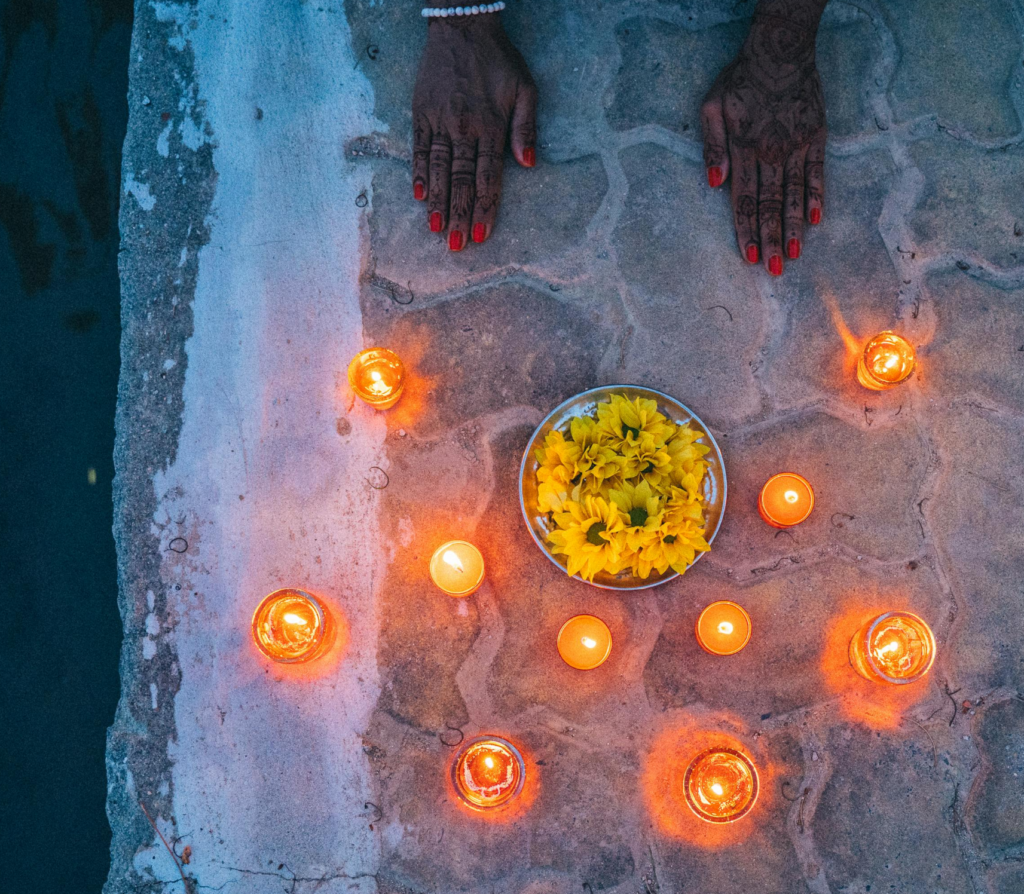
I wasn’t sure about my own stamina for solitude. But I had to start somewhere. As I waited for class to begin, I shut my eyes and tried to speak to God. It felt foolish, but if not now, then when? It was an awkward, one-way conversation with me rambling on like my two young children.
I am ashamed to admit that I didn’t ask for an end to world hunger, or for the earth to heal. The line that kept repeating in my mind was this: I want to be free. I didn’t know what it meant exactly. Free from what? Free from whom? The words resonated in my body, sorrowful at first, but gaining in strength and spirit. By the time the swami emerged onto the stage in his orange robes, I was wiping tears from my eyes.
The class itself didn’t do much for me. The swami, though knowledgeable, spoke fast in a low droning voice I struggled to follow. For the next hour, I dozed in and out of his lecture, praying he didn’t notice.
At the end, the swami sat in a chair by the door. The attendees lined up to prostrate to the ground and touch his feet. My American sensibility balked at first, but then I eased into what I knew was a customary act of reverence. In this culture, touching the feet of a spiritual leader was just part of the deal.
When my turn came, the swami studied my face for a moment, realizing that I was new. He asked me my name and where I lived.
“Welcome,” he said with a smile.
I didn’t know if I’d be back to the temple on the Upper East Side. But I knew one thing for certain: my journey had begun.
